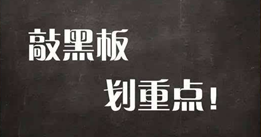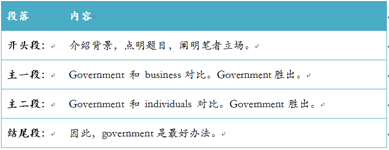10月20日雅思大作文解析
2018-10-22编辑: 长安来自: 环球教育
10月20日雅思考试结束之后,很多当天参加考试的考生都一脸懵地走出了考场。卷子都交了,也没想明白,这是什么题?议论类?报告类?大家不禁感叹到,我花了大把时间学会了"六个提问方式"的所有题目。结果,你考我这个题?

北京环球教育杨亮老师相信绝大部分考生在备考阶段都会覆盖大家常说的六种提问方式。既,同意与否,双边讨论,优缺对比,积极消极,报告文章和混合提问。但是纵观历年题库,大家还是可以发现,其实这个六个题型不能全部覆盖所有问题。
就拿近几年的题库来说(2014-2018)虽只有两道题的提问方式不属于上述六种,但这也应该引起各位注意。如果追溯到2010年之前的题库,那么提问方式相对来说就更free style了。所以,说20号的题目是个新题型也不为过。

那么20号当天到底考了什么题呢?在翻看了大量考试回忆和直接对话几个当天考生之后,杨亮老师(笔名杨陆哲)得到了两个版本。
版本一:
Reports show that it is increasingly expensive to keep museums open to the public. Find the best ways to fund them (governments, business, or individuals) 20181020
版本二:
Reports show that it is increasingly expensive to keep museums open to the public. Find the best way to fund them (governments, business, or individuals) 20181020
如果不仔细看,这两个版本貌似没有区别。仔细辨认,才发现差了一个小S而已。但是,就这么个小S,在很大程度上会影响全题的论证逻辑。

我们先来说说版本一的论证逻辑。这个版本比较简单,我个人也深信考试当天的题目应该是这个版本。简单地说,这个题目就是需要考生论证什么才是资助博物馆的好办法。注意,只要是好办法就行,不一定非得是最好办法。后面括号中的三个词,是考生应该论述的范围。你可以把他们理解成为限制你思路的限定成分,你也可以积极地认为这是给你必要的提示。对于这个版本而言,有两个重点需要考生们注意。

一、括号里面的三个方面,我个人认为都需要讨论。
二、本题的结论可能性很多。可以是这三者中的一种是好办法,其他两个不可行。也可以是三者中两个都是好办法,一个不可行。亦或是,三个都是好办法。如此说来,本题的论证逻辑比较简单,没什么难度可言。
再来说说版本二。毫无疑问,纠结点就是这个the best way,一个明显的极端词或绝对词。直接限定了本文的结论肯定是这三者其中的一种可行,另外两种不可行。那么这道题的本质就变成了,可行的办法与不可行的两种办法的比较。也就是本文的比较简单的行文逻辑之一。针对版本二,考生也有如下几点需要注意。
一、 最好办法肯定是这三个选项的其一。只能是其一。
二、三个选项同样都需要论述,最好是相互对比。
下面的例文,其实是针对版本二所写。但是,由于版本二的结论同样也是版本一的诸多可能结论之一,因此这个例文其实也可以适用于版本一。(仔细读前面这句话,有点绕,但是很重要。)
文章论证逻辑如下:

It is universally known that museums, regarded as public resources, are particularly multifunctional, educating the public, showing traditions and cultures, and providing workplaces for related researchers. Nevertheless, what people are supposed to know more about museums is how they can be effectively funded, since operating museums is usually quite costly. From my perspective, compared with being supported financially by businesses or individuals, governments should inevitably shoulder the most responsibilities for offering funding to museum maintenance.
Chiefly, once the funding provided by some profit organizations is utilized for running museums, commercializing those museums seems unavoidable. Under that circumstance, visitors to those museums might be bothered over and over again by some commercials while concentrating on some works of art or antiques. Worse still, some cultural or historical researches organized by those museums may be influenced negatively due to the fact that at that time only the commercial value of those researches can be stressed instead of their academic value. By contrast, governments always fund museums without any conditions, and governments are more likely to highlight the public attribute rather than operate them as money-making machines.
Additionally, private donations are always welcomed by museums, but this does not imply that museums can be run successfully completely relying on that. There are, actually, many uncertainties of financial support from individuals, for example, how much they can donate, and when they want to donate. On top of this, some donors in most cases tend to give their money to some famous museums other than small and less-known ones. By comparison, governments are more able to constantly aid museums and reasonably distribute the funding in order to make sure that all large-scaled, small-sized, well-known or unfamous museums can be appropriately subsidized.
In conclusion, due to the above analysis, without a shadow of a doubt, funding from governments is certainly the best way to maintain museums.

相关阅读

-
预约雅思水平在线测试
获取0元体验课程












